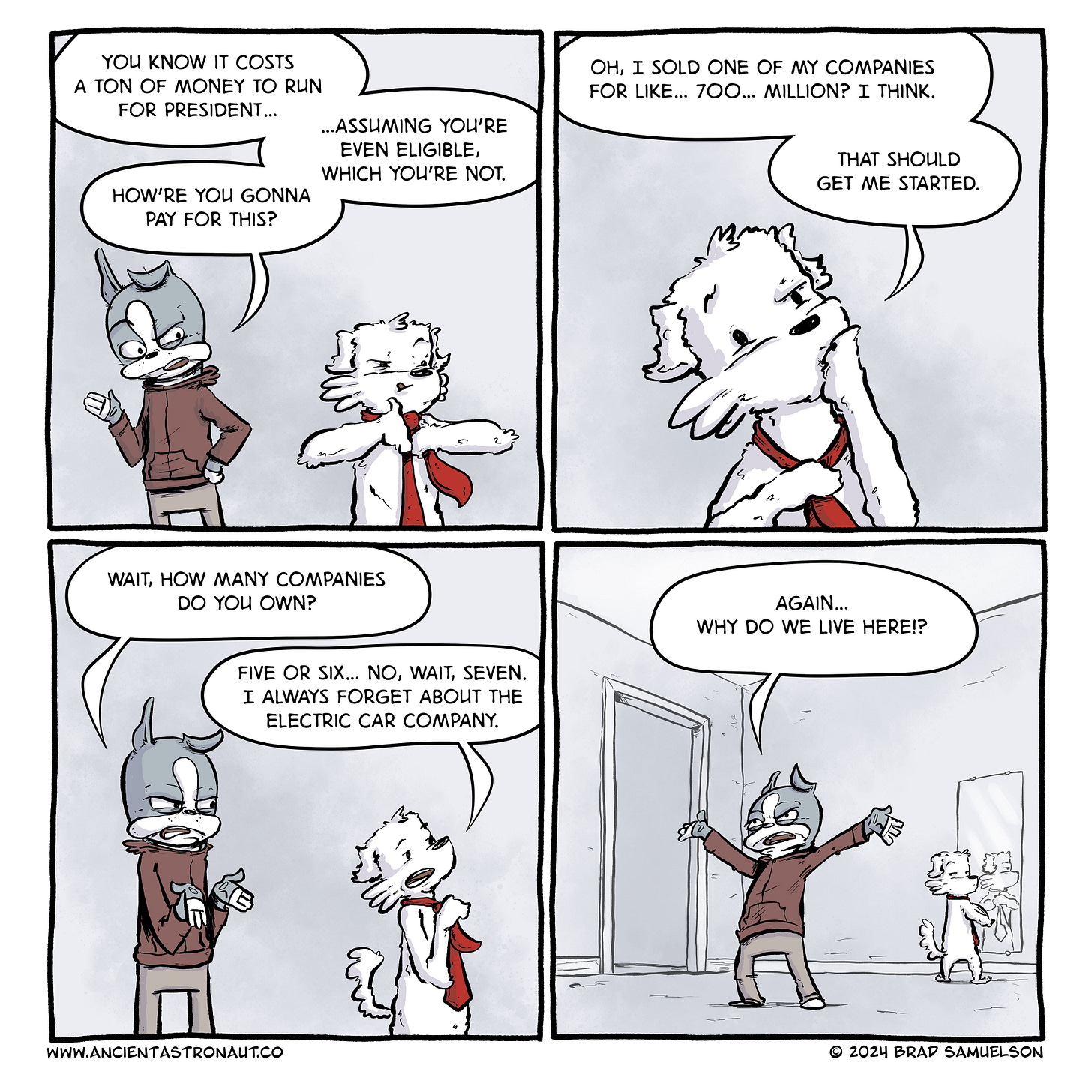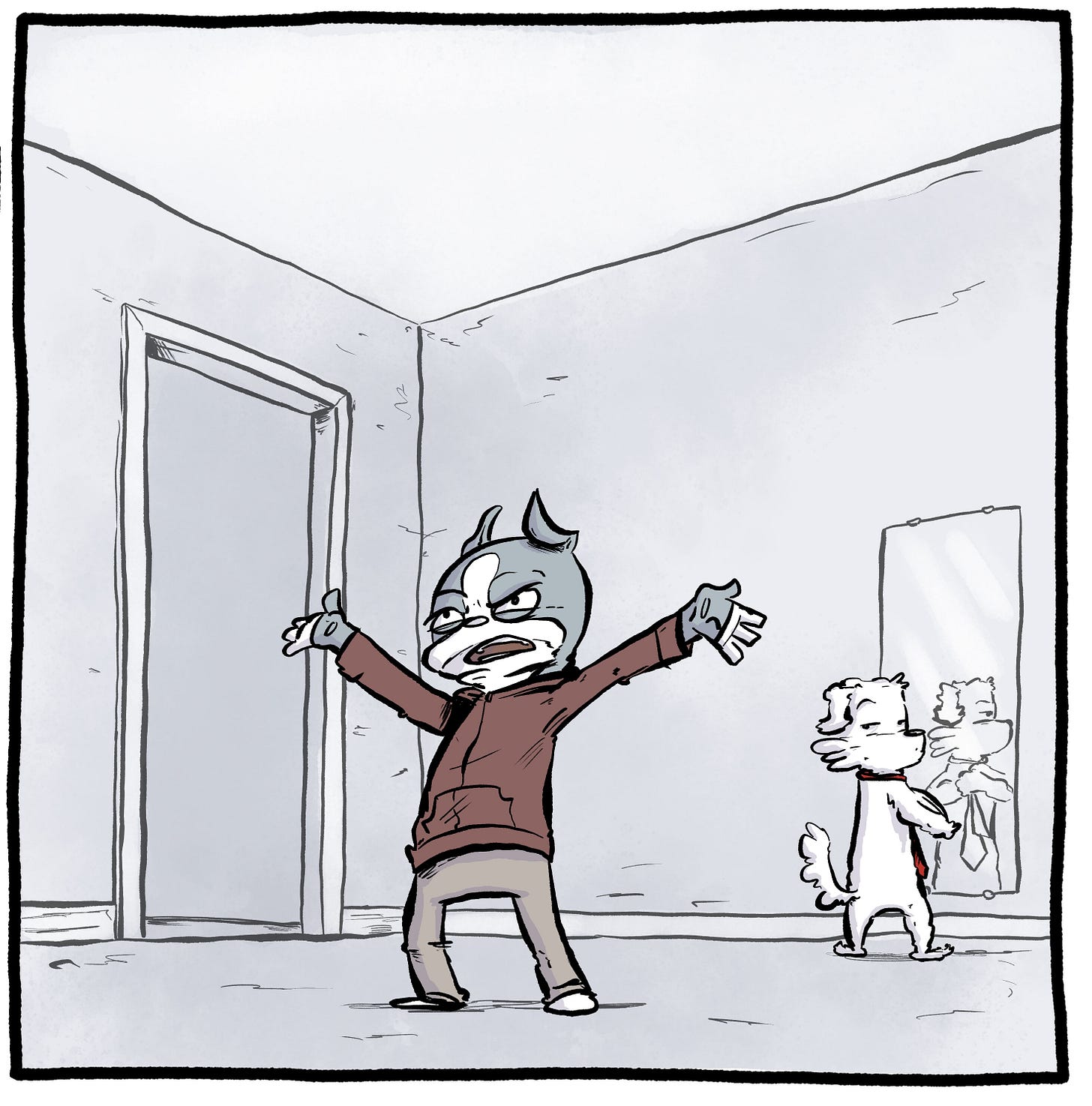There’s something about a naive little dog stumbling his way into incredible success while other characters struggle for everything that I find really fun to write. The irony of it is pretty interesting. Ollie started off as a character that I had planned as a little homage to my real life dog, Oliver. He was only meant to have a short appearance in the comic, but, true to his character, he managed to awkwardly stumble his way into a regular part of the cast. He’s really fun to write because he mostly writes himself.
One of the fun things about creating a regular comic strip is that I often have no idea where a storyline might go. It’ll start off in one direction, but then an interaction between two characters throws everything off the rails and we end up somewhere that I never intended. That’s the benefit of not planning these too far ahead, aside from a general idea file full of random thoughts. Of course it can come back to bite me sometimes. I’ll start a sequence that I think is gonna turn into a longer storyline and it fizzles out pretty quickly. You take the good with the bad.
Storytelling in Comics: Body Language
When you draw a comic, you are essentially the director, cinematographer, and every actor in the story. Today I want to focus a little bit about the ‘acting’ part. I’ve written in the past about the “Marvel Method” of making comics and why I hate it. To save you a click, the Marvel Method is a way of making comics where the writer comes up with a basic plot which the artist takes and draws out the pages. The writer would then add dialogue after the art was finished, which, to stick to the film analogy, would be a bit like having actors go through a scene without knowing the script and dub in the voices later.
I’ve often said that an artist’s ability to draw has very little to do with how good of a comic artist they are. Don’t get me wrong, being able to draw a convincing garbage can helps. But the ability to tell the story is the most important thing. Conveying tone and mood, showing a clear progression of events, and evoking emotion are key skills that separate a mediocre comic from a great one. Because the script is left to the reader, we need to help guide their internal voice over by using the body language of the characters.
There are artists who can make a decent career out of drawing comics with stiff characters that show one emotion (grimacing). For me, though, that instantly takes me out of the story.
When I think about body language and expressing the emotion of the character, I always start with the eyes. You can show a lot of emotion just with the eyes and brow of the character. From there the rest of the facial expression conveys the tone you want the reader to use when they read the word balloon. Here’s a quick tip, always point the tail of the word balloon to the characters face (or at least their head if the layout makes it difficult to point to the face). Not the shoulder. Not the stomach. You can always tell the experience level of a letterer by where they point the tail of a word balloon.
The pose of the character is the final element of body language. What’s their posture? What are they doing with their hands? Are they calm enough to be working on something while they’re talking? Are they so agitated that they need to clench their fists or flail their arms? Those are the kinds of actions that can really push your storytelling to another level.
If you want to dive deeper in this, there are a ton of resources out there but I recommend tracking down the How to Think When You Draw books by Lorenzo Etherington. They’re a bit hard to find right now, but he runs a Kickstarter campaign every so often where you can get the entire series, so give him a follow over there if you want to keep an eye out for them.
Thanks for reading! If you want to see more of my artwork/sketches/ramblings, follow me on X and Instagram or here on Substack Notes (I’m making an effort to be more active there). And if you really want to support me, I have a store!
Have a great week!
-Brad





